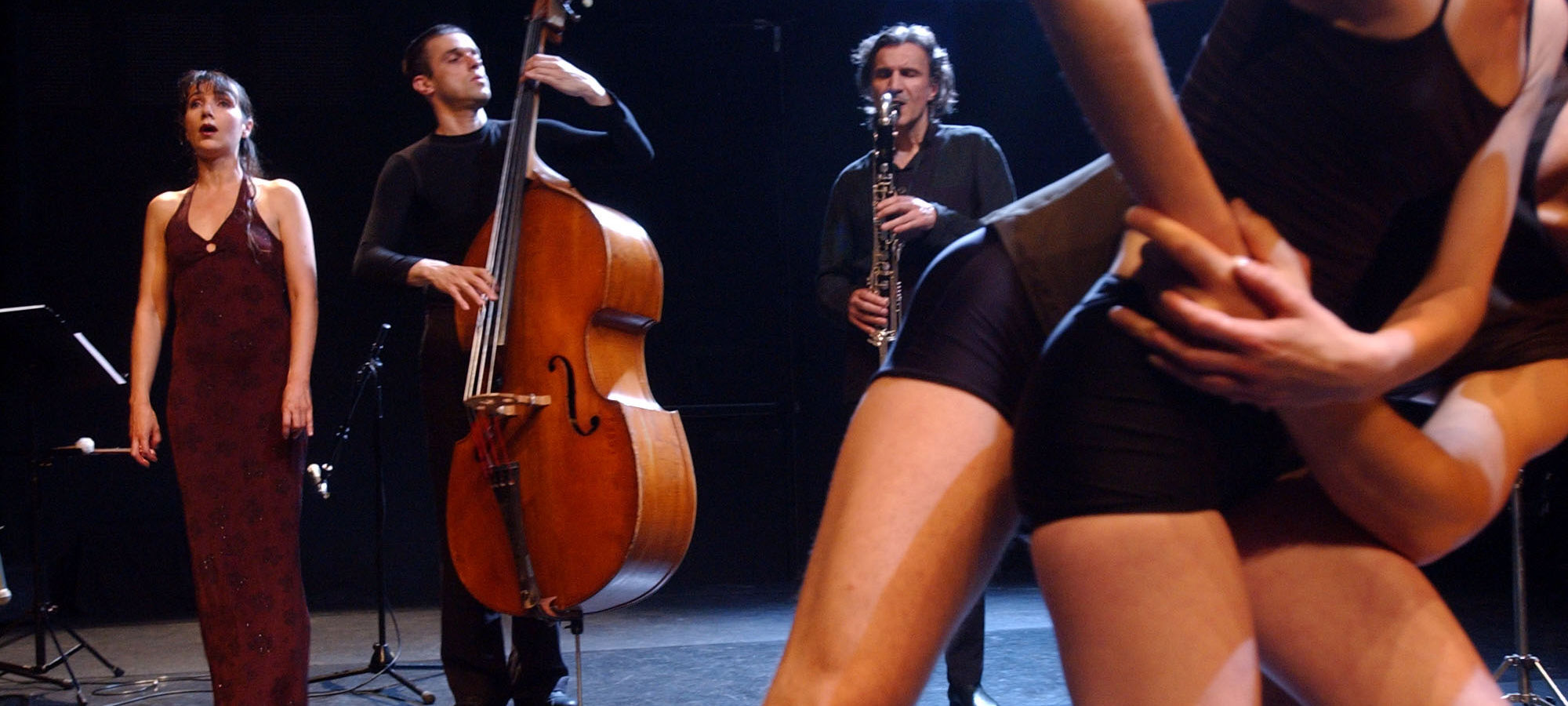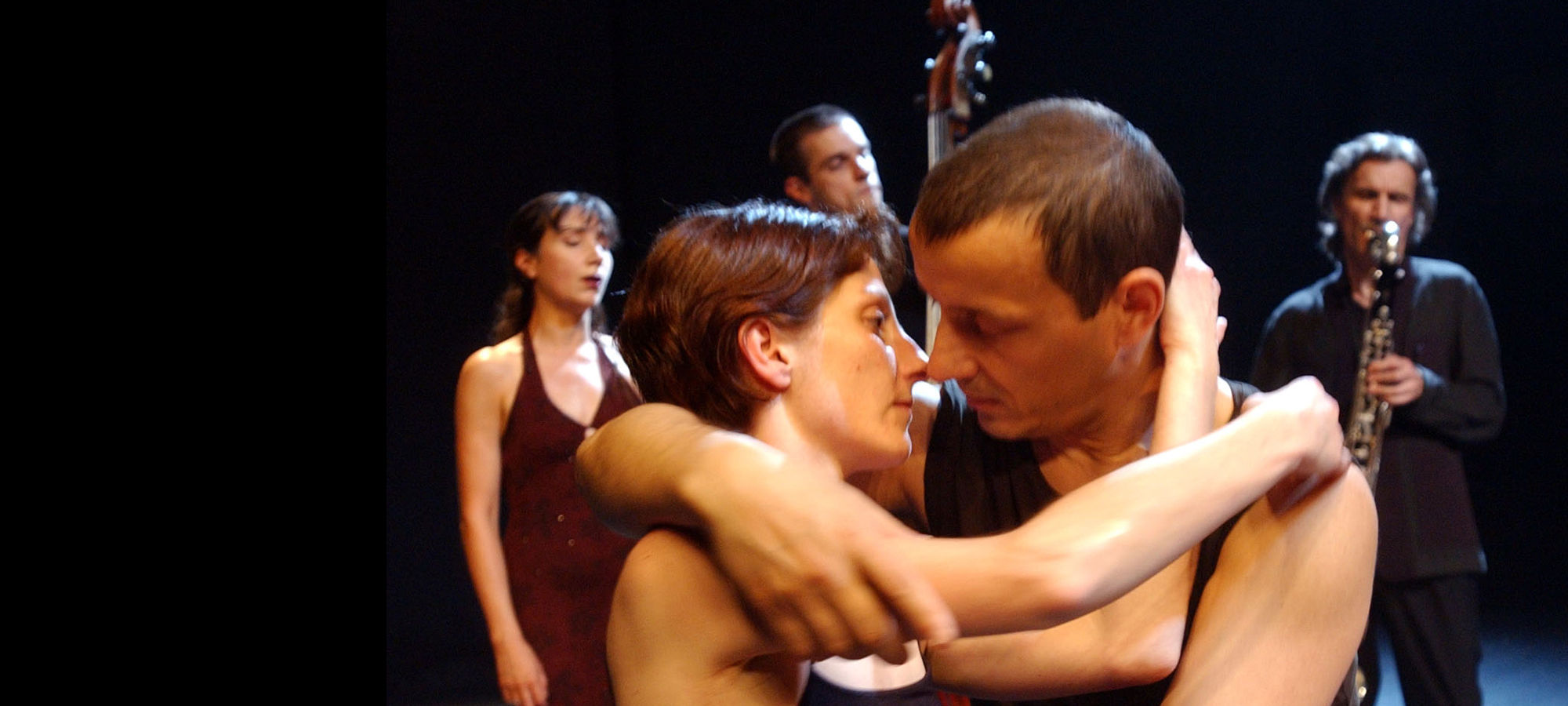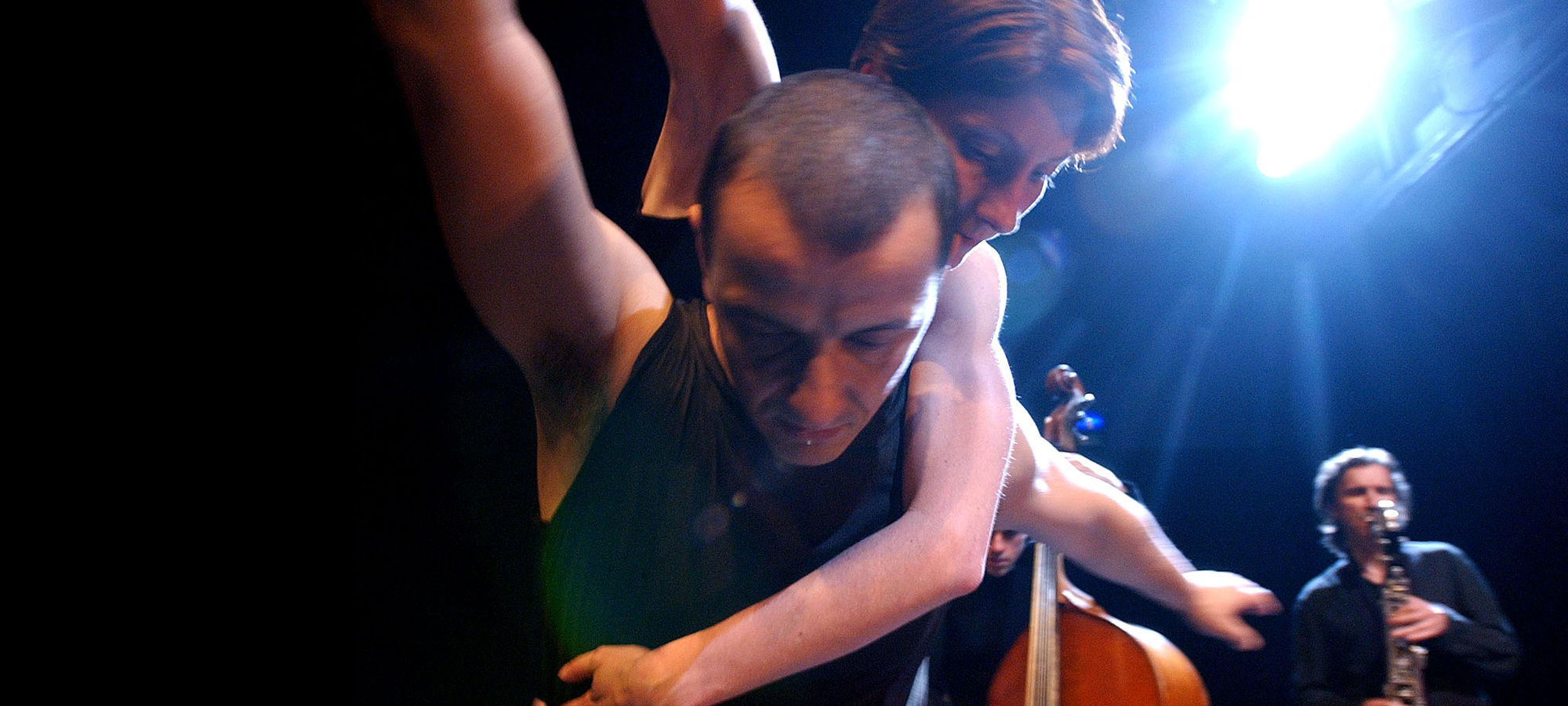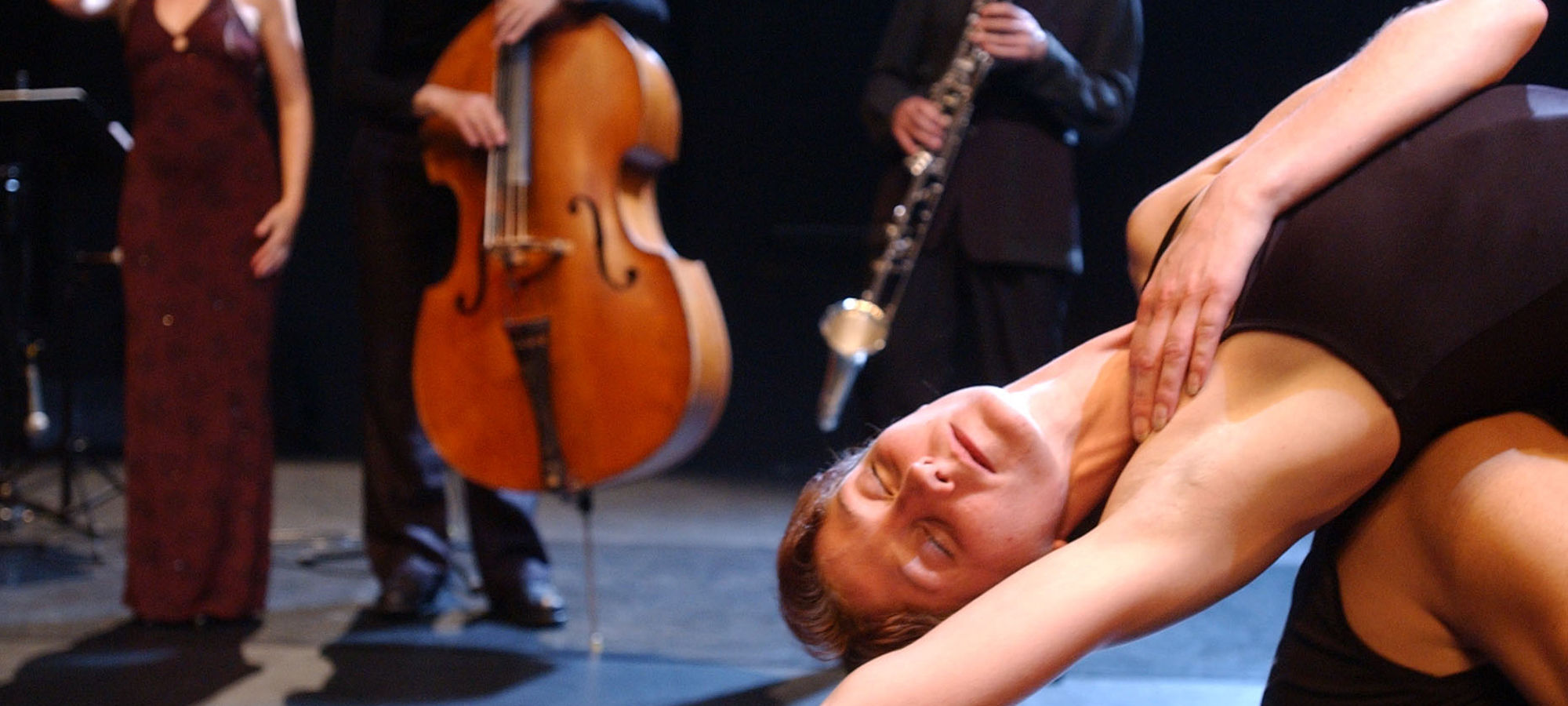
Ulysse et Penelope
Ulysses and Penelope is the second stage of a collaboration between the musical ensemble Accroche Note in Strasbourg and Michel Kelemenis, which was initiated in 2000 by the GMEM, Centre National de création musicale - Marseille. This musical voyage through contemporary compositions is also a recital where each dancer or musician performs a solo.
The principal characteristics of these 2 heroes from antiquity are their physical separation by the cruelty of an endless voyage and the destiny toward which two lives and two imaginations simultaneously unfold in the solitude of their isolation. The parallel between music and dance is evident, as they are revealed to our senses fundamentally differently and their attraction towards each other is boundlessly magnetic.
A Danced Recital danced by Muriel Masclaux Penelope is in her room weaving her daily cloth, but once the evening comes, she undoes all the work. Steadfast loyalty and the impossibility of forgetting nourish the dancer’s interpretation, and her isolation serves as the common thread and the liaison for listening to the recital of 3 solo instrumentalists.
The return of Ulysses on the evening of combat, danced by Kelemenis On his return to Ithaca where Penelope awaits, Ulysses’ voyage ricochets towards a senseless world peopled with mythological inventions and new vistas. The alternation between the real and the imaginary is translated on stage by alternating composition and improvisation: a salutary pulsation emerges where each mode – written or improvised – regenerates the other with a small dose of risk, and renders the performers’ infinitesimal need to anticipate enormously jubilant.
Echos
Luxemburgerwort Geneviève Charras
6 jun.2003
Michel Kelemenis and the musical ensemble Accroche Note from Strasbourg reunited in Strasbourg to survey contemporary music, mythology and the choreographic act. The choreographer from Marseille who performed extensively for Dominique Bagouet before founding his own company is attentive to the creative work of others. When surrounded by and collaborating with other artists, music animates his body, and the proximity of musicians is dear to him. This collaboration with Accroche Note is also about affinity and complicity ; so why not weave connections, a visual and sonorous canvas, doing it and undoing it, tempting fate : the strange relationship between music and dance since the Cunningham revolution maintains either the divorce between the two or random indifference, or better yet, the establishment of silence for its duration, its texture and its opacity.Michel Kelemenis and the musical ensemble Accroche Note from Strasbourg reunited in Strasbourg to survey contemporary music, mythology and the choreographic act. The choreographer from Marseille who performed extensively for Dominique Bagouet before founding his own company is attentive to the creative work of others. When surrounded by and collaborating with other artists, music animates his body, and the proximity of musicians is dear to him. This collaboration with Accroche Note is also about affinity and complicity ; so why not weave connections, a visual and sonorous canvas, doing it and undoing it, tempting fate : the strange relationship between music and dance since the Cunningham revolution maintains either the divorce between the two or random indifference, or better yet, the establishment of silence for its duration, its texture and its opacity.Ulysses and Penelope is the starting point for an encounter between body and music, using the corporality of music and the musicality of the body. Michel Kelemenis, author of strong and sensual dances where the accent is often placed on the body’s physicality (“Faune Fomitch,” homage to Nijinsky, “Paires câlines,” “Grands soirs,” “Clin de Lune,” “Chère Amour”…), pioneers unexpected sonorities through dance. An axial dance that shifts from the sagittal to the vertical or the horizontal ; the dancer’s gaze scrutinizes the horizon like a seafaring sailor and space broadens, opening up vast horizons. The musicians are on stage near the edges, sharing the physical and sonorous space.
Aperghis is authoritatively performed by Françoise Kübler who makes a chanted text out of “Monomanies” using the gestures of the two dancers that evolve with the music. The refined, discrete and musical dancer, Muriel Masclaux, who performs with the Ballet du Rhin, espouses Kelemenis’ dance and renders it delicate yet solemn ; the two characters’ interlaced jumps are pure beauty and dimly lit in intimate happiness. “The return of Ulysses on the evening of combat” is written for voice, percussion, clarinets, saxophone and double bass. This musical work reveals the purity and mannerisms of Michel Kelemenis’ solo dances with references to vivacious and coded gestures that highlight precise directions, crystal clear decisions, even in improvisation, in progressions and inflections : very nice work on the art of weaving a dance. The company, Plaisir d’Offrir is decidedly the cradle of a peaceful, and yet revolutionary odyssey ; dancing to the voice of Françoise Kubler on music by Armand Angster is without a doubt an additional “pleasure” the company shares with us !





